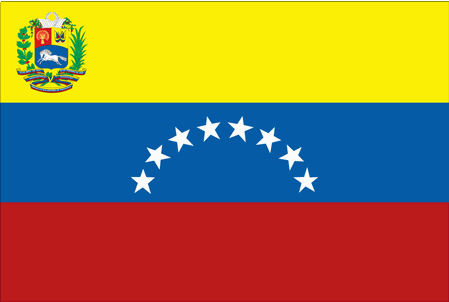To help inspire or plan your trip to Venezuela, some of its major attractions
for travellers are shown below, including some of the best natural, historical, cultural and adventure sites in the country.
These include all of UNESCO World Heritage Sites for Venezuela which represent the best
of the world's cultural and natural heritage.
Click on the icons below to focus on specific types of features
(click again to return to all).
|
|
|
|
|
|
|
|
|
|
|
|
 |
|---|---|---|---|---|---|---|---|---|---|---|---|
| Natural | History | Wildlife | Trekking | Cities | Religious Monument | Boat Journey | Rail Journey | Diving | Cultural | Adrenaline | UNESCO WHS |
UNESCO World Heritage Sites in Venezuela
| Caracas | |
|---|---|
The capital of Venezuela is a dynamic and bustling city which has developed into a vast concrete sprawl with the aid of the petro-dollars that power the Venezuelan economy. Its attractions include the birthplace of Simon Bolivar who helped to liberate half the South American continent from the Spanish, the colonial district of El Hatillo and the UNESCO World Heritage Site of the City University of Caracas. The university was built between 1940 and 1960 to the design of the architect Carlos Raúl Villanueva and is an outstanding example of the Modern Movement in architecture. The campus includes masterpieces of modern architecture and visual arts, such as the Aula Magna with the Clouds of Alexander Calder, the Olympic Stadium, and the Covered Plaza which have been integrated into a clearly articulated ensemble. UNESCO World Heritage Site: Ciudad Universitaria de Caracas | |
| Angel Falls | |
|---|---|
Angel Falls, the world's highest waterfalls at 980 metres, are located in Canaima National Park in south-eastern Venezuela. The Falls are a spectacular sight as the water plummets downwards off the cliff of the table mountain Auyantepui and vaporises in mid-air before settling in the pool below. Only discovered by outsiders for the first time in 1937 by American aviator Jimmie Angel, the Falls' remoteness adds to their appeal. They can only be reached by a two or three day trip on motorised canoe from the Indian settlements of Canaima or Kamarata, both of which are only accessible by air, with the journey only possible in the wet season. After sailing around Auyantepui and into the Devil's Canyon, a short hike through rainforest takes you to the base of the Falls to view the stunning scale of the cataract and, if water levels aren't too high, to bathe in its pool. On the way back to Canaima lie the broad Sapo Falls where it's possible to walk on a path behind the curtain of water and experience the stunning power of the cataract. A quicker way to see Angel Falls is to take a flight from Ciudad Bolivar for a panoramic view of them and their surroundings, though frequent cloud cover can make sightings difficult. UNESCO World Heritage Site: Canaima National Park | |
| Mount Roraima | |
|---|---|
The table mountains, known as tepuis, in the Gran Sabana of south-eastern Venezuela are a remarkable natural phenomenon that provide one of the great trekking challenges in South America. Mount Roraima is the highest of the tepuis at 2,835 metres, located close to the triple frontier with Brazil and Guyana. It was first climbed by British explorers Everard Thum and Harry Perkins in 1884, whose description of the mountain inspired Sir Arthur Conan Doyle to write his classic novel 'The Lost World'. Most of the plant life here is endemic to the region, evolving in complete isolation for millennia, though no dinosaurs have yet been found. The standard Roraima trek takes 6 days from Santa Elena, starting with a 2 day hike to the base camp from the Pemon Indian settlement of Peraitepui where porters and guides can be hired. The hike to base camp involves fording two rivers but is rewarded with beautiful views of Roraima and Kukenan Tepui, the adjacent table mountain, from which falls the world's second highest waterfall in the rainy season. The strenuous ascent though rainforest to the cliff edge and then up along a natural ramp, takes 3-5 hours. The summit is a bizarre world of black moss-covered pillars, strange rock formations, ravines, quartz crystals and the unique flora, a truly memorable experience. Most groups spend two nights camping on top of Roraima and when the clouds clear, there are stunning views of the Gran Sabana, Kukenan and the northern section of Roraima. UNESCO World Heritage Site: Canaima National Park | |
| Coro and its Port | |
|---|---|
Coro was founded in 1527 and is an excellently preserved colonial town with over 600 historic buildings. Its unique earthen constructions are a rich fusion of local traditions with Spanish Mudéjar and Dutch architectural techniques. UNESCO World Heritage Site: Coro and its Port | |




